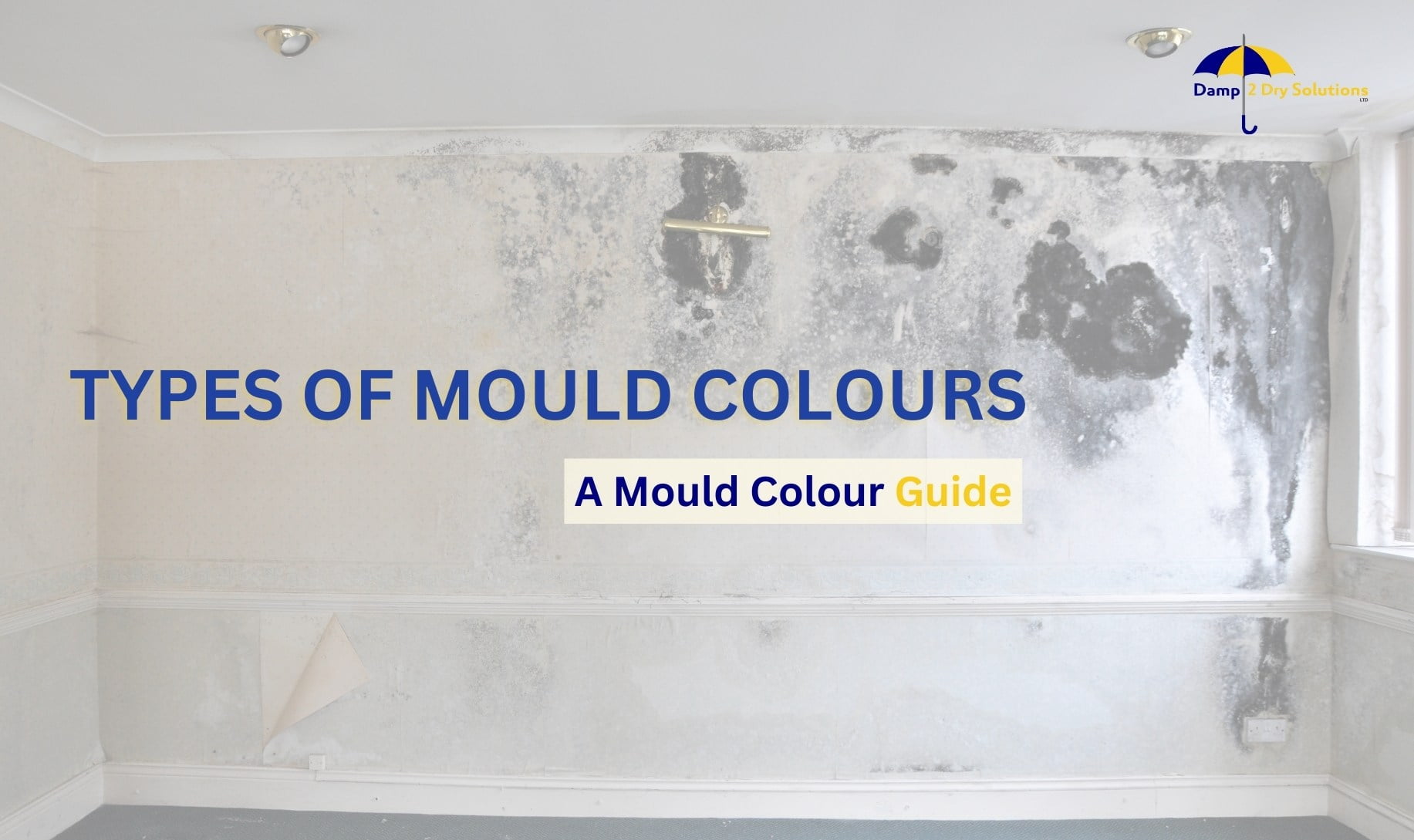
When it comes to unwanted house guests, mould takes the cake. Not only does it overstay its welcome, but it also brings along a host of problems ranging from structural damage to health issues. But did you know that mould comes in a variety of colours, each with its own story and implications for your home?
Let’s dive into the types of mould colours commonly found around the house, and decode what they’re telling us.
What is Mould, Exactly?
Before we start exploring the colour palette of mould, let’s get one thing straight: what is mould?
In the simplest terms, mould is a type of fungus that thrives in moist environments. It reproduces by releasing tiny spores into the air, which then land on surfaces and start to grow.
The presence of mould in your home isn’t just an eyesore; it’s a sign that there’s excess moisture lurking somewhere.
What Colour is Mould? The Colour Spectrum of Household Mould
Mould doesn’t stick to one colour; it’s quite the fashionista. Mould can appear in various colours, including black, green, white, yellow, and even pink. The colour often depends on the type of mould and the surface it grows on. Each colour, from black to white, tells a different story. Let’s break down the most common ones.
Black Mould – The Infamous Invader
When people hear “mould,” black mould often comes to mind first. Scientifically known as Stachybotrys chartarum, it’s notorious for its potential health risks.
Black mould is usually found in areas that remain wet for long periods, like bathrooms or leaky walls.
It’s essential to tackle this mould type promptly due to its association with respiratory issues and more severe health problems.
Green Mould – The Common Culprit
Green mould is what most people see on bread or fruit that’s past its prime. However, this colour of mould is not limited to food; it can appear on walls, carpets, and damp areas in the house.
It’s usually a sign of a minor moisture problem but should not be ignored, as it can spread quickly.
White Mould – The Stealthy Spore
White mould tends to fly under the radar due to its colour, often mistaken for mildew. It thrives in cooler, damp conditions and can be found on a variety of surfaces, including wood and fabric.
While not as immediately alarming as black mould, white mould can still cause health issues and damage to your home if left unchecked.
Yellow Mould – The Warning Sign
Yellow mould, often bright and noticeable, can indicate a deeper moisture problem. It’s commonly found in basements and crawl spaces, areas known for high humidity levels.
While it might not be as harmful to health as black mould, it’s a signal that there’s a need for moisture control and cleanup.
Red Mould – The Rare Sight
Red mould is less common but can occur in homes, particularly on damp drywall or behind wallpaper.
Its appearance is a nudge to homeowners to inspect their home for leaks or condensation issues, as red mould thrives in persistently moist environments.
Why Colour Matters
The colour of mould in your home does more than make an unsightly stain; it gives clues about the moisture level, potential health risks, and sometimes even the material it’s feeding on.
Understanding mould colours can help homeowners identify the underlying issues causing mould growth, be it leaks, condensation, or inadequate ventilation.
Tackling Mould Head-On
Knowing is half the battle. Once you’ve identified mould in your home, the next step is removal and prevention.
Safe Removal Techniques
For small areas of mould, a DIY approach with soap and water or a mould removal product may suffice. However, for large infestations or if black mould is suspected, it’s wise to call in the professionals.
They have the tools and expertise to safely remove mould and address the moisture source.
Prevention is Key
Preventing mould from making a comeback is all about moisture control. Fix leaks promptly, ensure good ventilation, use dehumidifiers in damp areas, and keep the home clean and dry.
Regular inspections can also nip potential mould issues in the bud before they grow out of control.
The Bottom Line
Mould in your house can be more than just an unsightly nuisance; it’s a health hazard and a sign of underlying moisture problems.
By understanding the different colours of mould and what they indicate, homeowners can take proactive steps to address and prevent mould growth.
Remember, when it comes to mould, it’s not just about cleaning up—it’s about drying out, fixing up, and keeping an eye out. You should also seek professional help if the mould is severe or beyond your ability to handle.
FAQs About Household Mould
Can I paint over mould?
Painting over mould is like putting a plaster on a wound that needs stitches—it doesn’t solve the underlying problem. It’s essential to remove the mould and address the moisture source before repainting.
How quickly can mould spread?
Mould can grow and spread within 24 to 48 hours under the right conditions. Quick action is crucial to prevent a small problem from becoming a big one.
Are there any health risks associated with mould exposure?
Yes, mould exposure can lead to various health issues, especially for individuals with allergies, asthma, or compromised immune systems. Symptoms can range from nasal stuffiness, throat irritation, coughing, and wheezing, to more severe reactions in sensitive individuals.
Mould in the home is a clear indicator that there’s a battle with moisture that needs to be won. By understanding the colours of mould and their implications, homeowners can arm themselves with the knowledge needed to fight back, ensuring their homes are safe, healthy, and mould-free.

